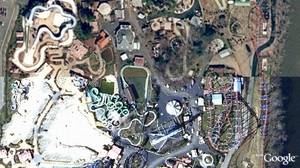TileCache: Two announcements
Posted in Amazon Web Services, Locality and Space, TileCache on December 22nd, 2007 at 17:57:51TileCache 2.0 has been released. From the announcement:
TileCache 2.0 is a major change in that way that the code works internally: rather than one large module each for layers, services, and caches, these are now split up into individual files.
The benefit that this offers is large: it allows for much easier customization of TileCache layer classes, with support for dropping your own custom modules into your TileCache config for either Layers or Caches. Additionally, it makes support for new services simpler.
One of the new layer types is an ArcXML layer, and one of the new Service types is support for MGMaps, a mobile mapping client available on many different mobile phones. One of the things that’s *not* mentioned in the relase is that TileCache now has limited support for KML SuperOverlays, allowing you to use browse your worldwide dataset in Google Earth. (A handy thing to have, if you ask me.)
Second announcement: TileCache in SVN now has support for storing tiles in Amazon Web Services S3 — simply tweak your tilecache.cfg, and enter:
[cache] type=AWSS3 access_key=your_access_key secret_access_key=your_secret_access_key
save the file, and you’ll be caching in S3.
(Also, in development, I have accrued a total of 4 cents of cost — but all of those are rounded up numbers, I’m nowhere near actually having to pay any ‘real’ money yet on any of their four metrics.)
Included as part of the Cache layer is a handy set of management tools for your S3 cache:
Usage: AWSS3.py [options] action
action is one of:
list_locks
count_tiles
show_tiles
delete <object_key> or <list>,<of>,<keys>
delete_tiles
Options:
-h, --help show this help message and exit
-z ZOOM zoom level for count_tiles (requires layer name)
-l LAYER layer name for count_tiles
-k KEY access key for S3
-s SECRET secret access key for S3
There’s probably a lot more that should be done with regard to the S3 cache layer, but for users for whom outsourcing data management is an acceptable cost, you now have the ability to use S3 more easily.
Enjoy!

